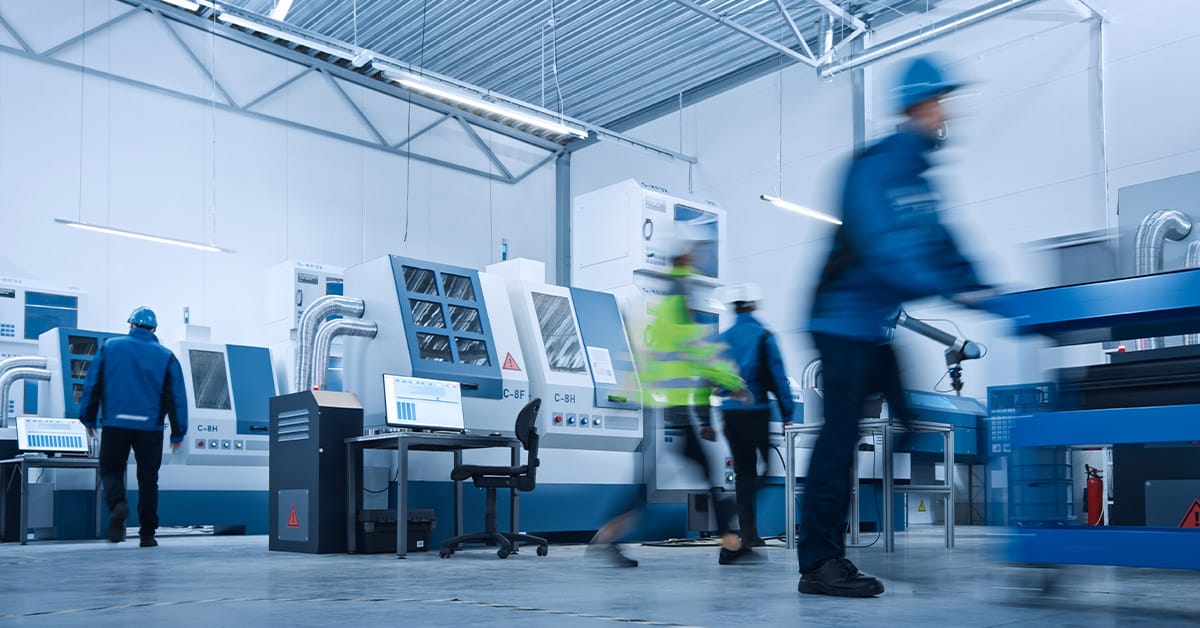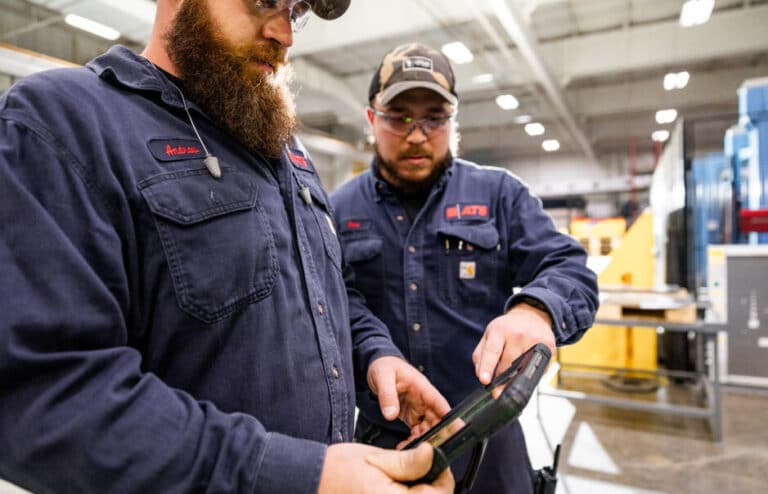Adopting lean manufacturing increases focus on equipment changeovers. These are periods when there’s no production and lean often accentuates their impact by increasing their frequency.
SMED is a structured approach to reducing the time needed to change a machine over from one product or part to another. The benefits are substantial, especially when applied at bottleneck processes.
What is SMED in manufacturing?
SMED is an acronym for single-minute exchange of dies. This stems from its origin as method for reducing the time needed to swap out press dies. The principles, however, apply to any production machinery and can even be used elsewhere. Note that SMED should be thought of as single digit minute exchange because the goal is to get the changeover down to under 10 minutes. Trying to make it faster still usually yields diminishing returns.
SMED in manufacturing addresses the time wasted when performing changeovers. Few businesses have the volumes to leave machines set up to produce a single product, so changeover is an almost universal aspect of manufacturing.
Trying to minimize the OEE impact of changeovers pushes manufacturers toward longer production runs. While good for efficiency, this increases inventories, reduces flexibility and often negatively affects delivery performance and customer satisfaction.
When a SMED effort is finished, not only should changeover be reduced significantly, but also it should be standardized and documented. This eliminates variability in changeover time, which is a source of unpredictability in manufacturing.
Elements of SMED
SMED starts from the principle that every changeover can be split into two types of work:
- Internal elements: These are tasks that can only be performed while the machine is stopped. Removal and replacement of a tool is usually internal as it can’t be done while the machine is running.
- External elements: These are parts of a changeover that could be carried out while the machine is running. Bringing material for the new part to the machine is an example of an element that should be external but is often internal before conducting a SMED exercise.
Steps for SMED implementation
Every SMED exercise is a team effort. While support from engineering and maintenance is beneficial, the team must include people familiar with the changeover task. Having people from different backgrounds ensures a mix of perspectives and provides the ability to make the changes identified. However, the team can’t be formed completely until the target machine is chosen.
The steps involved in a SMED exercise are:
- Determine Pilot Area: Select a machine or process where a big impact can be achieved. Good candidates are machines where changeovers are conducted several times a week and where they take long enough to be a problem in terms of lost capacity. SMED benefits will be maximized by targeting a bottleneck machine. Machines with inconsistent changeover times are also good targets.
- Identify Internal & External Elements: Video a typical pre-SMED changeover and review it with the team. Identify each element, then go through the list to decide which are internal to the changeover.
- Remove External Elements: Parts of the changeover that occur while the machine is running are external and need not be included in the SMED exercise. (Opportunities for continuous improvement should be noted for future action.
- Convert Internal Elements to External Elements: Look for ways to perform internal elements while the machine is running. Fetching new tooling is an example.
- Optimize Remaining Internal Elements: Improved workplace organization can save time spent looking for tools. Guides and dowels can eliminate the need for adjustments after installing new tooling.
Once the new changeover has been proven, document it as a standardized procedure. This prevents any reversion to previous practices.
Challenges and benefits
Skepticism is common when first introducing SMED to manufacturing workers: The reasons for addressing work that’s non-value adding but necessary can be hard to understand. They may also be unwilling to replace old habits with new practices.
These challenges can be addressed by explaining the benefits, including:
- Less machine downtime and increased capacity (especially impactful at the bottleneck machine)
- Increased production flexibility, allowing shorter runs (which may eat up some of the capacity increase)
- Less work involved in performing the changeover
- Improved quality through reduced setup variability
SMED for lean manufacturing
SMED is a core tool in lean, along with kaizen and kanban. It allows shorter production runs without incurring increased downtime due to changeover. This helps product move through the factory at a steady rate. It also helps push down inventories, which saves space and reduces waste due to damage.
While a business embarking on a lean journey may start by implementing 5S, sooner or later they will need to tackle machine changeovers.
Machine condition shouldn’t affect changeover time
SMED exercises often result in engineering and maintenance taking a close look at the variability in their machinery. This results from inadequate maintenance procedures. Carrying out required maintenance always improves overall performance.
As a leader in industrial maintenance, technology and parts services, ATS works with manufacturers to ensure equipment meets or exceeds required standards. Contact us to learn more.


